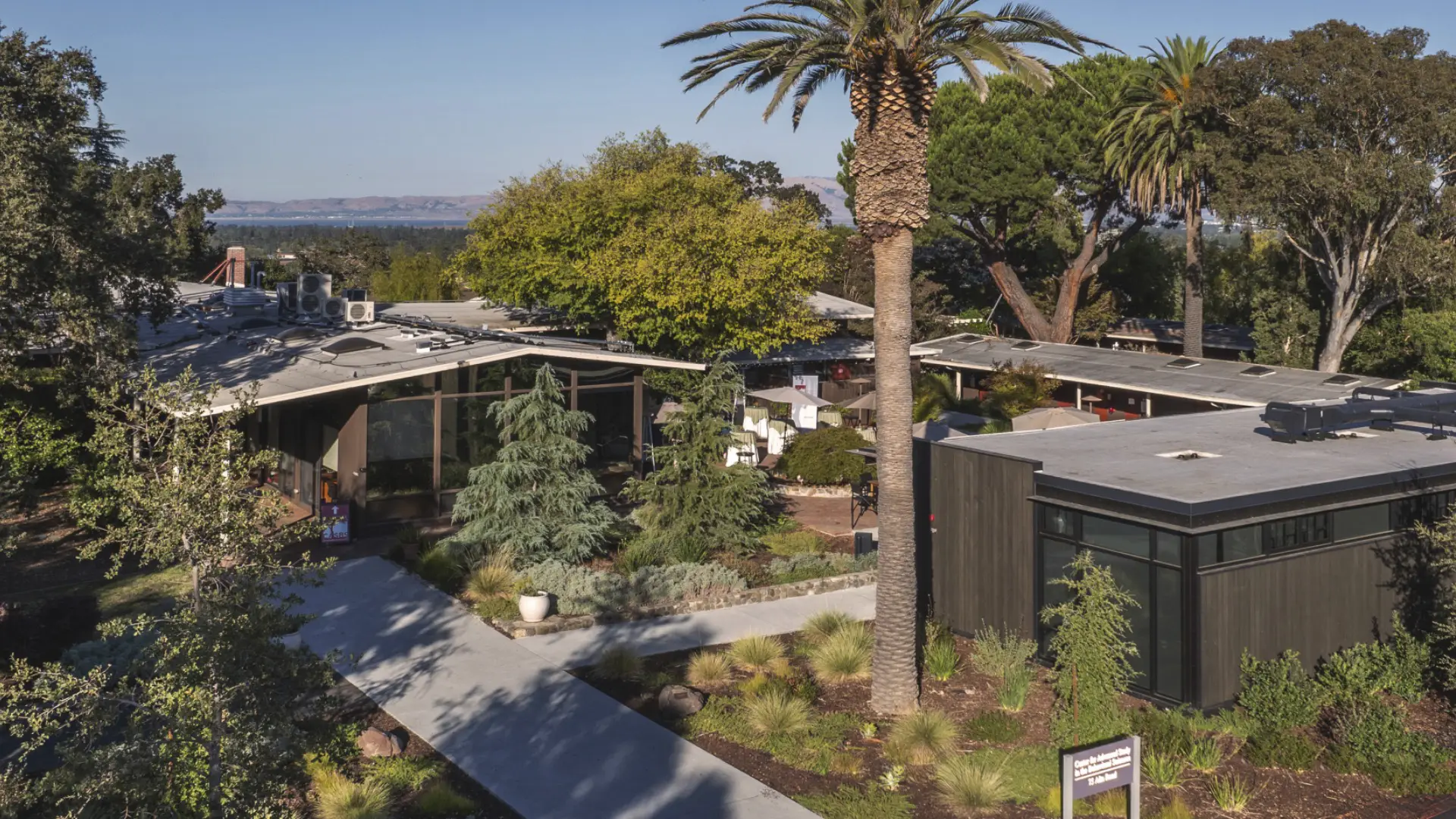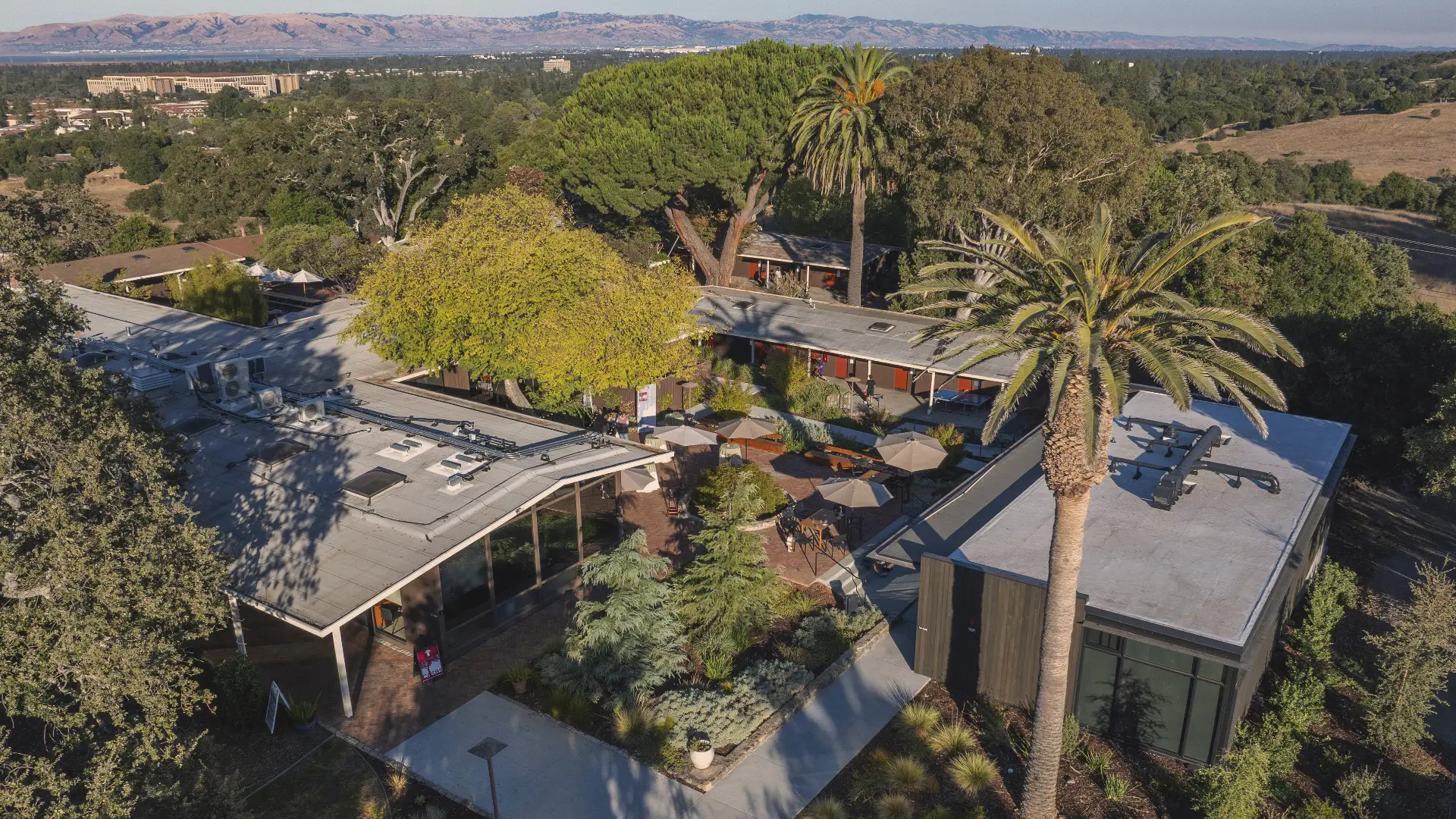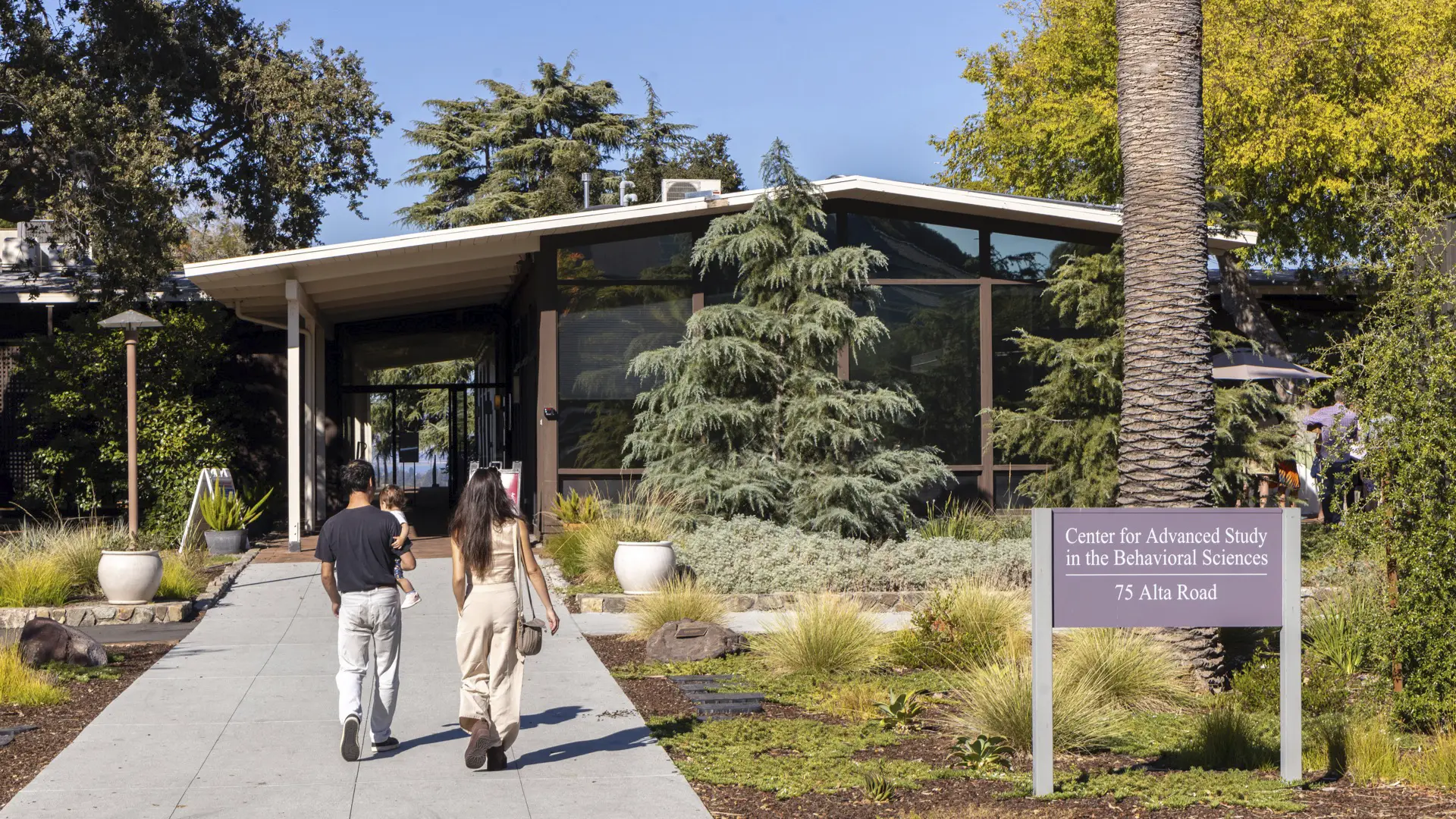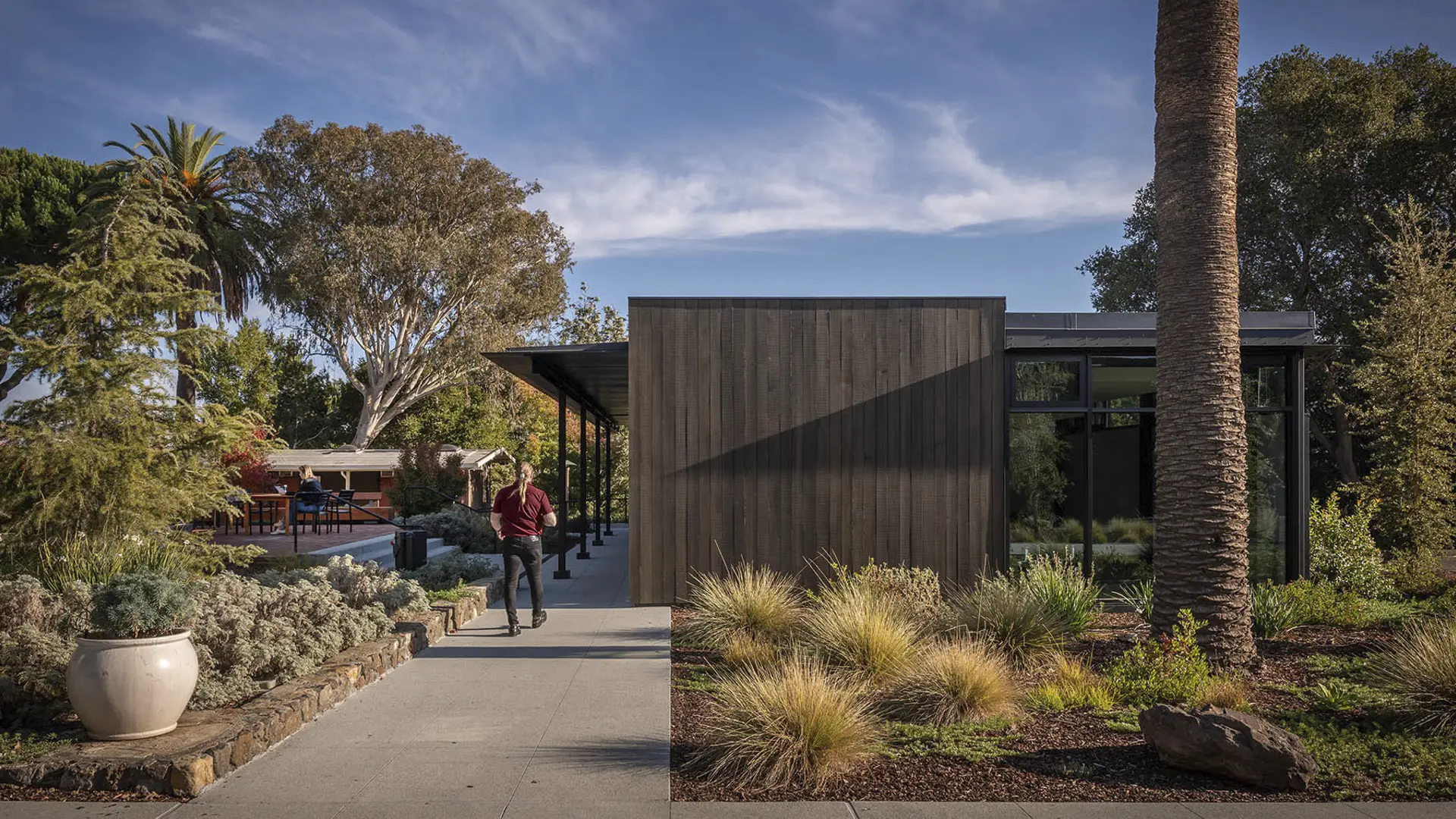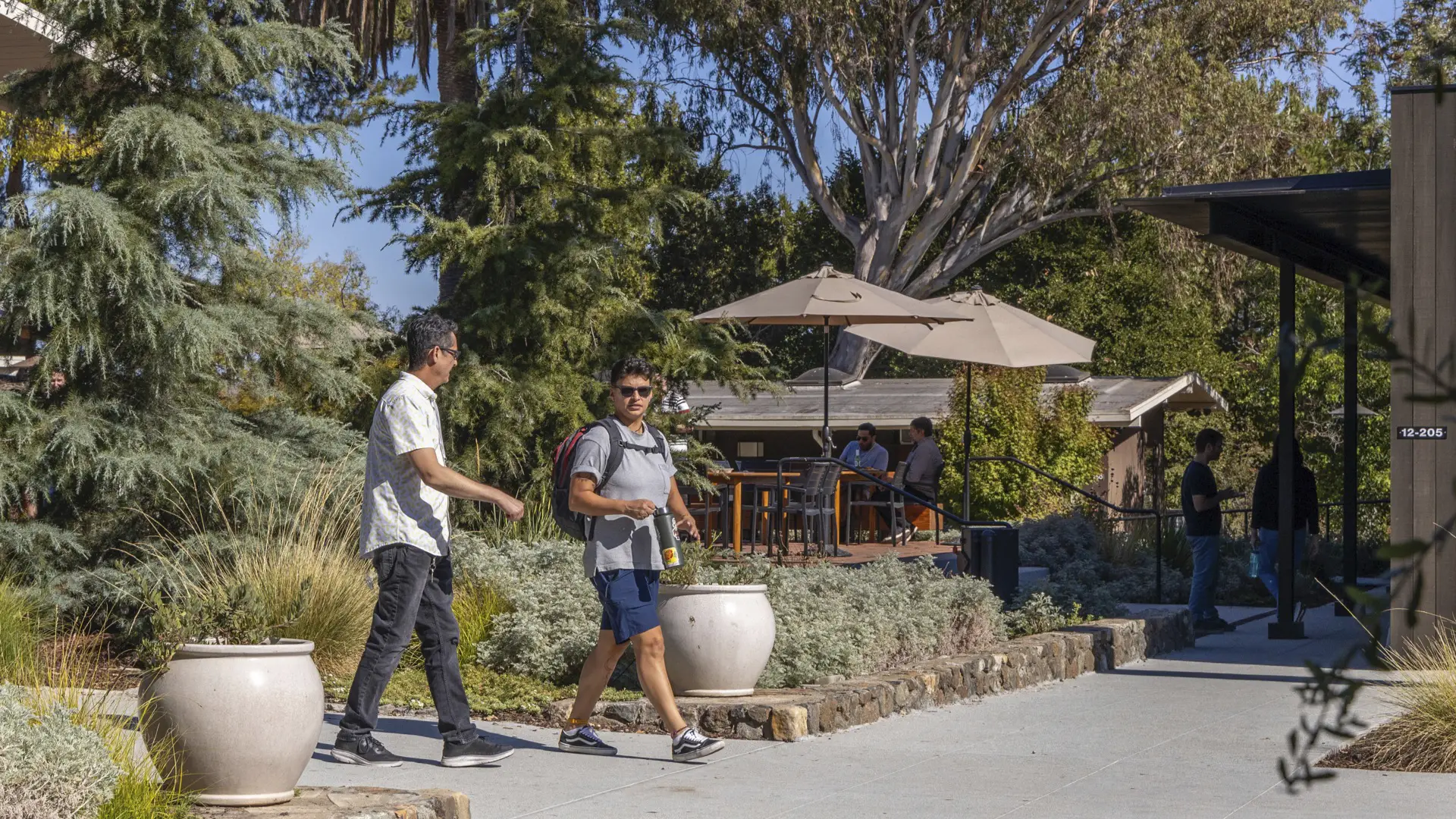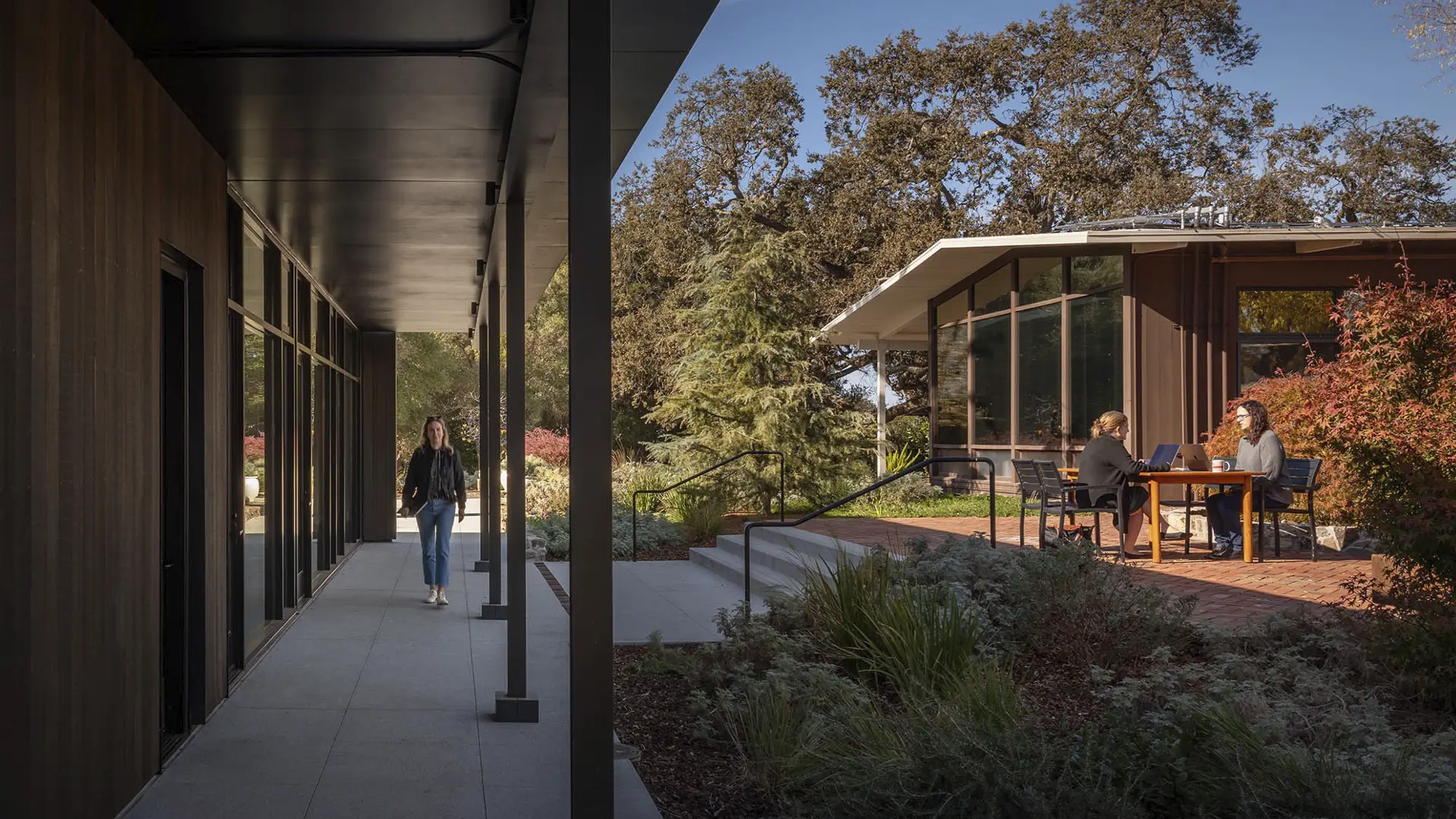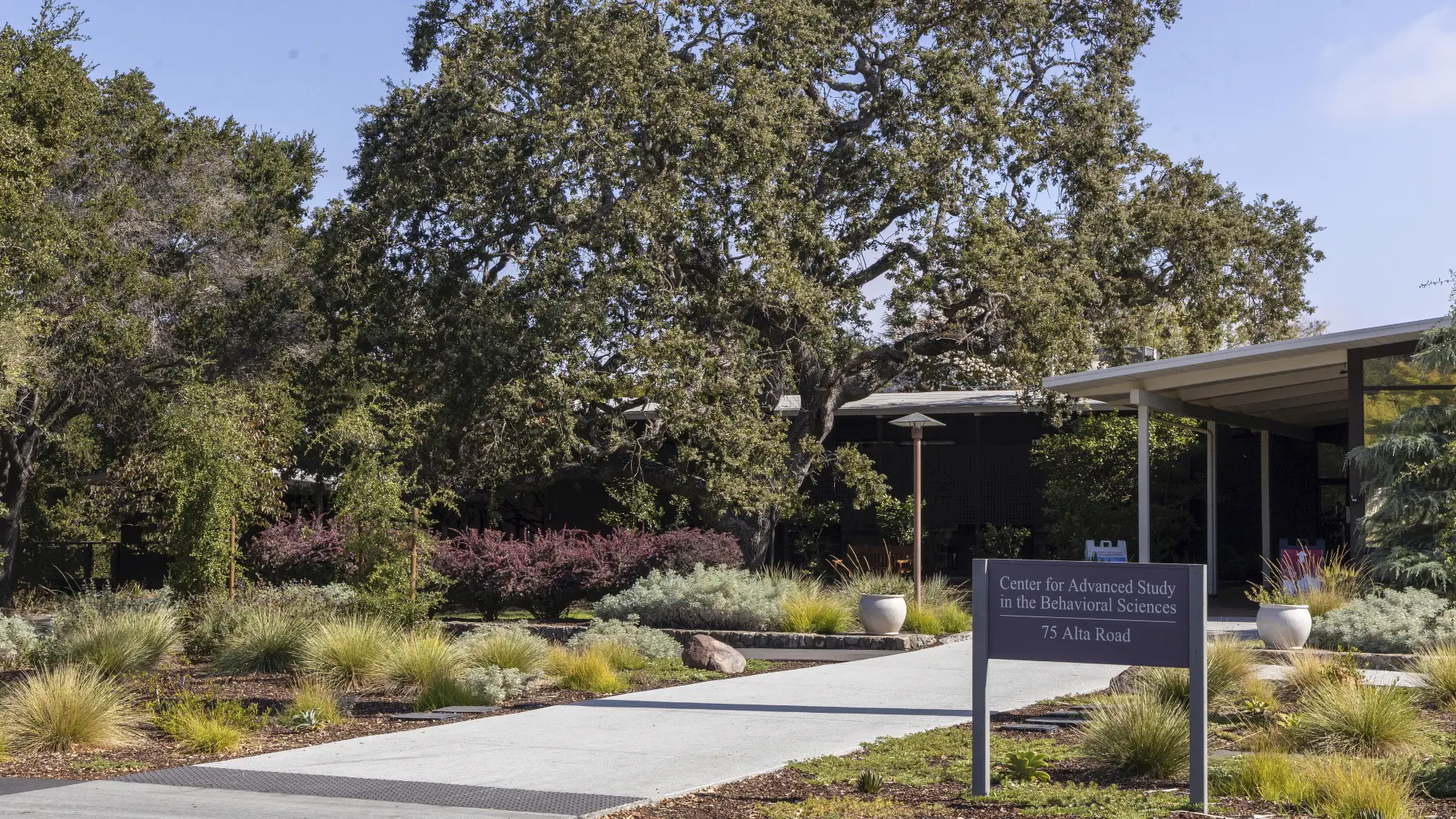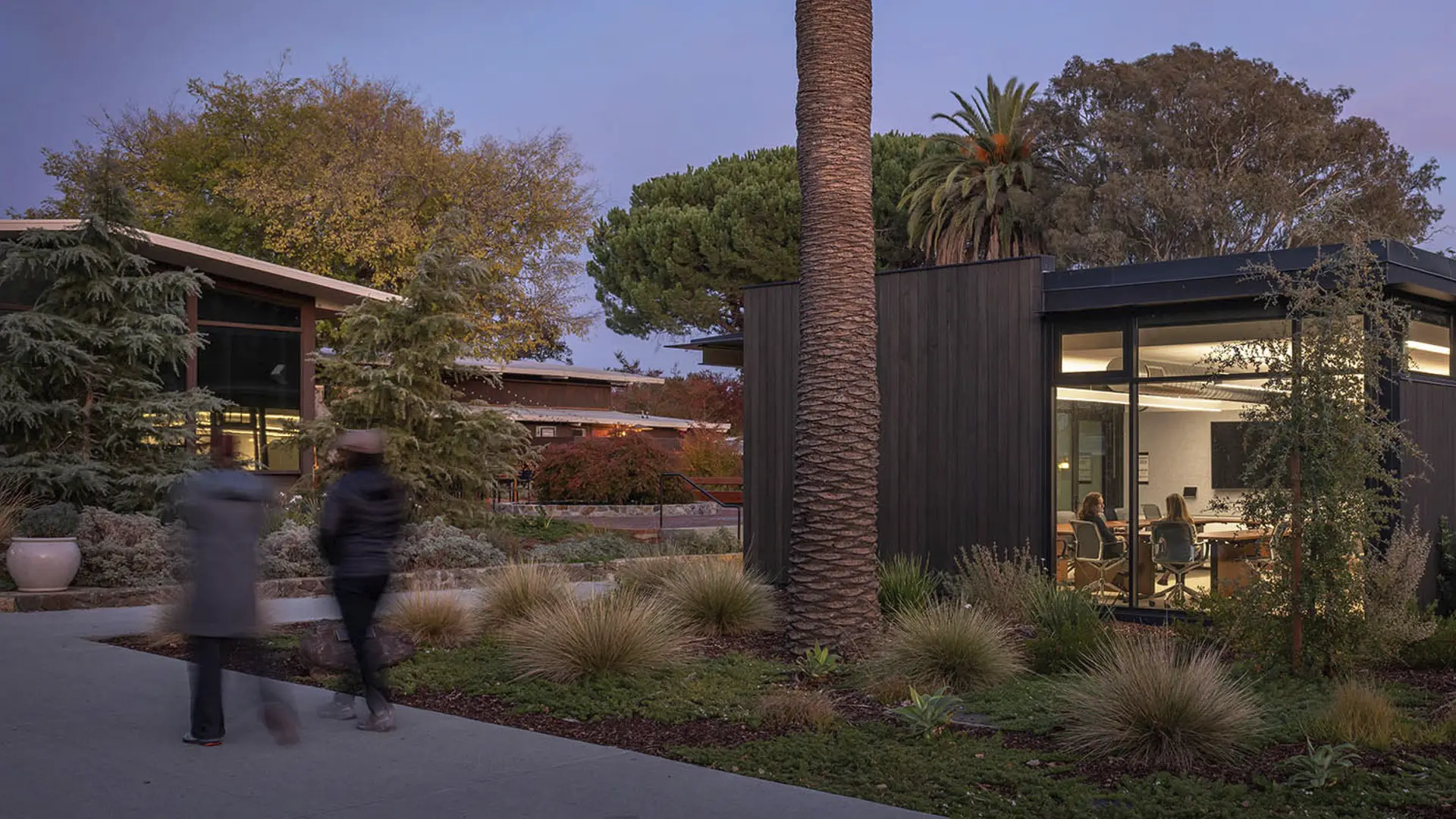Sitting atop a hill above Stanford University’s campus, the Center for Advanced Study in Behavioral Sciences (CASBS) has long been a destination for groundbreaking thinkers, with 30 Nobel Prize winners, 25 Pulitzer Prize winners, 52 MacArthur Fellows, and 176 members of the National Academy of Sciences among the esteemed class of Fellows. Situated between the campus’ well-known Stanford Dish and undeveloped pastures, CASBS occupies a unique place at the wildland-urban interface, functioning as a campus within a campus—an enclave for innovation.
To shape the next chapter of this legacy, SWA collaborated with Olson Kundig to revitalize CASBS’s mid-century modern setting, honor Thomas Church’s original landscape design, and enhance the facility to inspire collaboration.
Olson Kundig introduced the first new building to the campus since its founding in 1954. Strategically positioned, the new administration building frames a central courtyard, transforming what was once paved asphalt into an inviting social hub. Oriented for optimal sunlight, the courtyard is marked by prominent existing trees to enhance their presence. The trees are complemented by a series of stone retaining walls, referencing the feature often used in Church’s designs to navigate grade changes across the site and improve the connection between gathering spaces.
With no original records of Church’s design to reference, SWA drew from a portfolio of nearly 300 Stanford projects and studied Church’s broader portfolio to develop a list of signature plantings appropriate for the historic campus. The selected tree palette was expanded using a wider range of more adaptable and climate-resilient oak species, creating the next generation of oak canopy shading the complex.
The completed courtyard establishes a welcoming entrance to the CASBS campus. It also serves as a development tool, leveraging the majestic California landscape to create an atmosphere that invites engagement and events that spark new ideas. As the first major update to the CASBS campus in 60 years, the collaboration building and courtyard enhance the campus experience, honoring the Fellows of the past while inspiring those of the future for decades to come.
Stanford West Apartments
SWA placed a special emphasis on maintaining the riparian corridor with native planting, using consideration when dealing with the archaeologically sensitive areas of the site, as well as existing recreation trails and landscape amenities such as parks and play areas. The internal street grid and architectural and landscape elements are designed to recall the ...
The Iris and B. Gerald Cantor Center for the Visual Arts
The original Stanford campus museum was damaged in an earthquake in 1989. With help from major namesake donors to the museum, significant site improvements, expansion and seismic renovation improvements were accomplished. SWA provided master plan updates and full landscape architectural services including pedestrian pathways; two major terraces for displaying ...
University of Chicago Booth School of Business
This project regenerates a spectacular, historic cliff-side waterfront site by activating it with new purpose. Working carefully to interweave layers of preservation and natural beauty, the building and landscape work together to leave a light footprint. Today, a distinctive global campus honors the history of its earlier occupation while providing inspiration...
Shanghai International Dance Center
Inspired by the idea of movement, this collaboration with Studios Architecture achieves an artful harmony of building with landscape, program with site. The image of a dancer in grand jete kindled the designers’ imaginations and served as the project’s organizing idea. Asia’s first professional dance complex is tucked between a freeway, a subway station...



